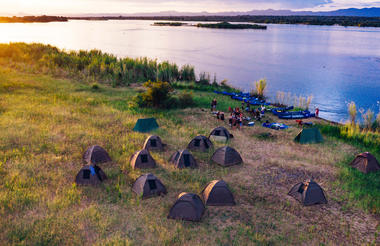Resting at the foot of Mount Meru, the sprawling city of Arusha is known as the safari capital of northern Tanzania. It serves as an excellent base from which to explore the remarkably scenic surrounding area which includes majestic Mount Kilimanjaro, as well as the Manyara, Tarangire and Ngorongoro National Parks. Arusha is a good spot to take a day or two off from the safari circuit as it features a temperate climate and lush surrounds. Visitors can look forward to exploring the wildlife-abundant Serengeti National Park; the magnificent Arusha National Park; and taking on the challenge of climbing Mount Meru, Africa’s fifth highest mountain.
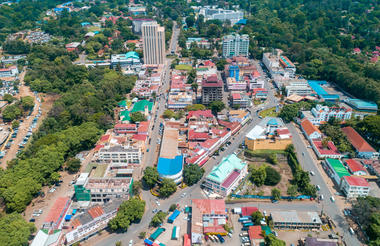
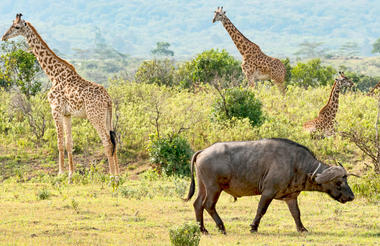
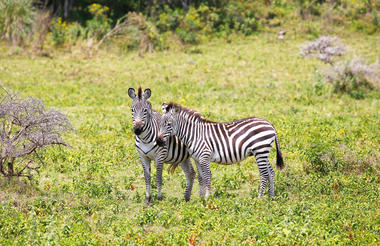
The Seronera region, in the central Serengeti, is set directly on the Great Migration route and offers excellent viewing of this incredible annual phenomenon, when countless wildebeest flood the area and move across the plains. While migratory game populations fluctuate seasonally, Seronera is still a wildlife hotspot at other times of the year, sheltering the Big Five, among many other species. A number of small campsites provide accommodation and visitors can enjoy hot air balloon trips and walking safaris as well as guided game drives.



Travellers heading for the Serengeti and Ngorongoro Crater will pass through the town of Karatu in the green hills of Tanzania’s northern highlands. Presided over by the towering Ol Deani Volcano, this small, colourful town serves as a popular overnight stop for visitors exploring the area’s many game parks. The town offers a variety of activities including browsing the bustling marketplace, sampling beer at a local brewery, visiting a traditional homestead, or taking a guided walk through the Ngorongoro Forest in search of waterfalls and caves. Whether you are looking for cultural tours, hiking and biking opportunities, a chance to enjoy an authentic rural Tanzania experience, or simply a break between safari game drives, this underrated town has plenty to offer.



As previously described
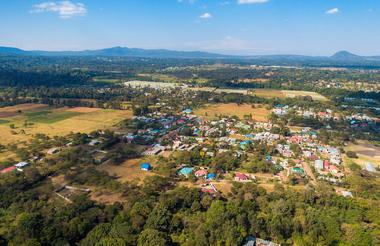
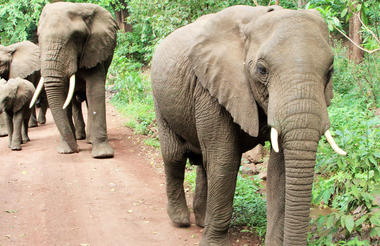
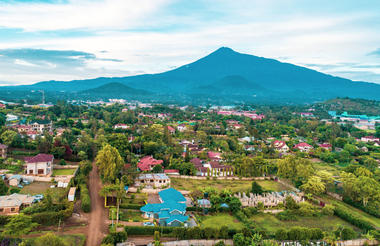
Set just a stone’s throw away from the idyllic island of Zanzibar, the town of Bagamoyo lies within the UNESCO-listed Bagamoyo District on Tanzania's coastline. It was once a major trading port, the capital of German East Africa, and a stopover for slave and ivory caravans who travelled from Lake Tanganyika to Zanzibar. Today it is a hub for traditional dhow building and is known for its arts, culture and fascinating history. The town features many colonial-era buildings lining narrow, unpaved streets. Bagamoyo makes for an excellent day or weekend trip from Dar es Salaam.


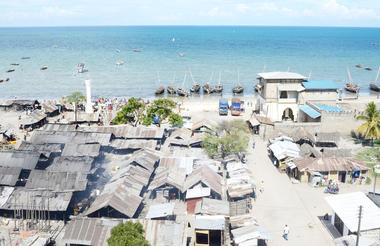
Flanked by a national park and a picturesque bay, the village of Marumbi is a serene retreat positioned midway along Zanzibar's east coast, boasting a collection of hotels and traditional houses. Marumbi caters to adventure enthusiasts with an array of thrilling water sports activities like windsurfing, kiteboarding, and scuba diving. Off its shores, vibrant coral reefs teem with diverse marine life, from colourful fish to graceful sea turtles and playful dolphins. Just a half-hour drive inland lies the renowned Jozani Chwaka Bay National Park, Zanzibar's sole national park, a premier wildlife-spotting destination, and a sanctuary for the rare and endangered red colobus monkey. The forest also shelters a myriad of other plant and animal species, including exotic birds and enchanting butterflies. Here, beneath the dense forest canopy, visitors can kayak along winding mangrove forests - one of the largest in the world.. At dusk, authentic East African dhow boats embark on sunset cruises across the bay.
Situated on the western coast of Zanzibar’s Unguja Island, UNESCO-listed Stone Town is the oldest part of Zanzibar City and is the cultural heart of the island. The town’s photogenic winding alleys are fringed by grand historic buildings, bustling bazaars, a glorious sultan’s palace, and the intriguing House of Wonders - named as such for exhibiting running water and electricity as never before in 1883. Stone Town also boasts numerous sacred buildings - over fifty mosques, six Hindu Temples, a Catholic, and an Anglican Cathedral - all of which are beautiful in unique ways. Other highlights include sunset dhow cruises; spice tours to aromatic distilleries; and neighbouring Changuu Island, home to stunning sandy beaches, a historic prison, and dozens of giant, ancient tortoises.
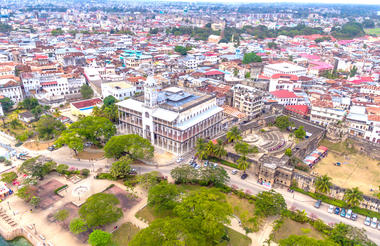
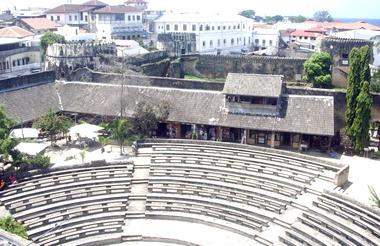
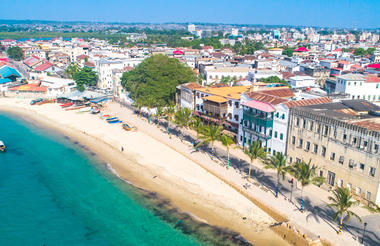
Dar es Salaam is Tanzania’s former capital, her largest city and main port. The distinctly African, colourful markets are well worth a visit and both German and British influences can still be seen in the architecture around the city. Conveniently positioned amidst some of the most important sea routes in the world, the city is the transport and economic hub of the country as well as a centre for arts and culture. It serves as an excellent jumping-off point to explore the surrounding area including Pemba, Mbudya, Unguja islands, a variety of national parks and countless pristine beaches. Visitors can look forward to a number of other activities including: learning about Tanzanian culture at the National Museum and House of Culture, visiting the eclectic Oyster Bay, and taking a stroll through the city's lush Botanical Gardens.
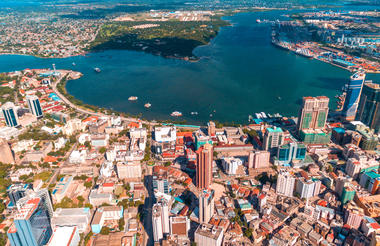
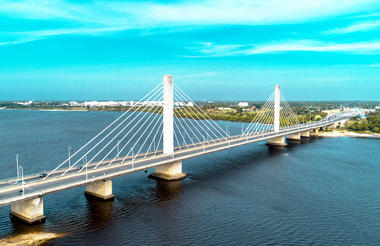
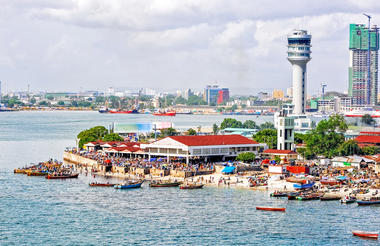
Situated just 300 kilometres from the capital, Mikumi is Tanzania’s fourth-largest park and one of its most accessible national parks. The landscape is characterised by low-lying wetlands flanked by mountains on either side. Diverse wildlife inhabits the park’s 3230-square-kilometre area, including lion, buffalo, buck, civet, crocodile, snake, lizard, hippo, zebra and even packs of wild dogs, which are seldom seen in other parts of the continent. The floodplain also supports over 400 species of bird, both resident and migratory species. Visitors can look forward to various activities including wildlife viewing, bird watching, visiting the educational and research centre, and viewing the massive collection of baobabs near Mbuyuni.
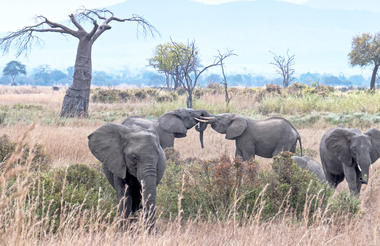
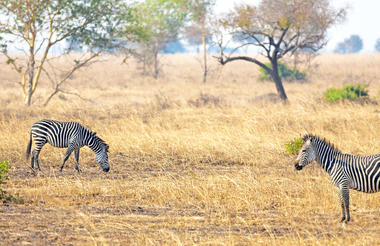

Set above the Ruaha River in the lush mountains of southern Tanzania, Iringa is a picturesque stopover en route to Ruaha National Park. The town features German colonial buildings, a lively market, and a collection of fascinating historical sites. Roughly 20 kilometres southwest of the town is the Isimila archaeological site, where an array of Stone Age tools and relics have been uncovered. It serves as a gateway to the beautiful Ruaha National Park, Tanzania’s largest park. Visitors can enjoy a visit to the Boma Cultural Museum and the Neema Crafts Centre.



The Tanzania Southern Highlands is an idyllic rural area made up of four provinces, namely, Iringa, Mbeya, Rukwa and Ruvuma. This diverse region features volcanic mountains, vast grasslands, rolling hills, lively markets, jacaranda-lined streets, comfortable lodges and plenty of wildlife. A haven for nature lovers and history enthusiasts alike, travellers to this remarkable destination can visit the breathtaking Lake Nyasa, discover a variety of beautiful orchids of Kitulo National Park, explore the ancient Isimila stone age site and view the colonial buildings in the heritage town of Iringa. Don’t miss the opportunity to enjoy a wildlife safari at Mikumi National Park, which houses large herds of zebra, wildebeest, buffalo and impala, as well as giraffe, elephant, lion and spotted hyena.
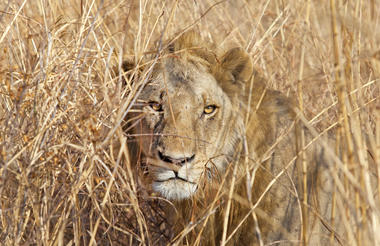
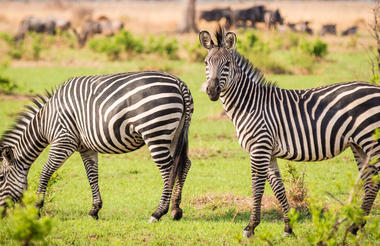
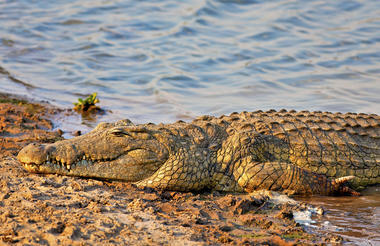
Chitimba is a tiny town on the shores of Lake Malawi in Malawi's far north, set two hours drive from the Tanzanian border. The lake’s long golden sand beaches are fringed by palm and papaya groves, while in the background steep mountain peaks contribute to the scene. A stroll along the coast will take you past traditional fishing villages and allow you to experience beautiful birdlife, while more challenging trails are also on offer (up to Manchewe Falls or on the Livingstonia Mountainsexceptional lake views). Immerse yourself in local culture with a guided walk to visit the resident witch doctor, try your hand at wood carving, or take a lesson in crafting Malawian jewellery.
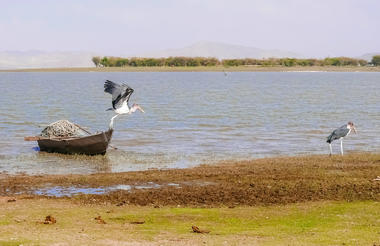
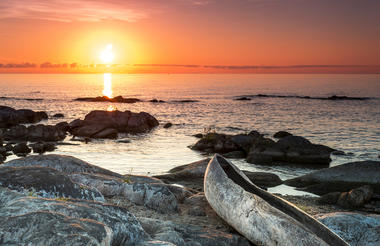
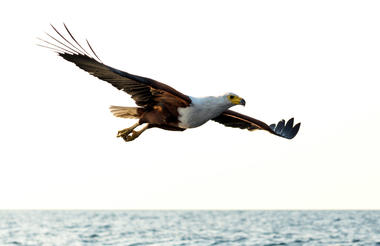
Lake Malawi is the crowning jewel of this beautiful country. It is one of the largest, longest and deepest freshwater lakes in the world. Numerous fishing villages are scattered along its length but there are still vast stretches of uninhabited golden beaches. Known as ‘The Lake of Stars’, the natural beauty of Lake Malawi draws travellers from around the globe. It has more species of fish than any other freshwater lake in the world, boasting over 600 species of fish in the Lake Malawi National Park alone. The 590 kilometre long and 85 kilometre wide Lake is the third-largest lake in Africa, occupying one-fifth of Malawi’s total area. With a depth of 700 metres, it is incredibly deep with its lowest point reaching more than 200 metres below sea level. Visitors can look forward to spotting a myriad of wildlife in and around the lake including, hippos, crocodiles, fish eagles, and over 1000 species of brightly-coloured endemic cichlid fish.



Bordering the Luangwa River, the northern and southern Luangwa National Parks contain some of the most breathtaking and untouched wilderness in Africa. As a result of this and the parks’ successful anti-poaching campaigns, the area has developed into a world-renowned wildlife haven. The South Luangwa National Park is renowned for its walking safari, which allows visitors to view elephant, hippo and even lion close-up under the supervision of professional and knowledgeable armed guides.
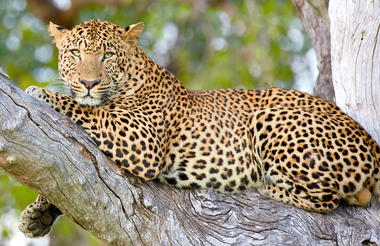
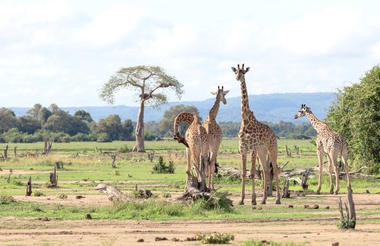
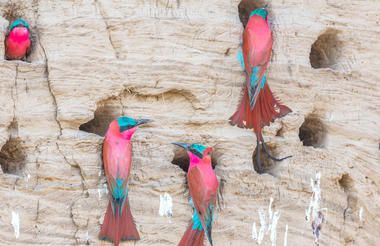
As previously described
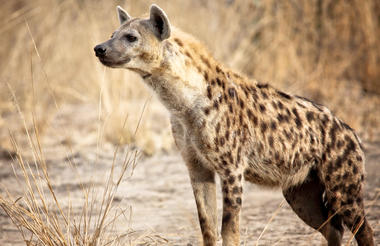
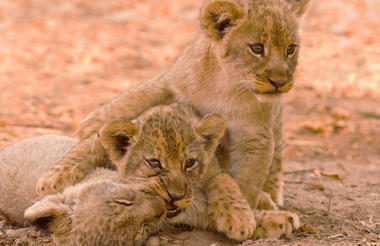
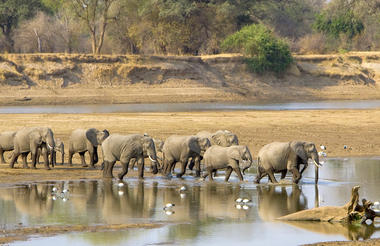
Located in the Petauke District of Zambia’s Eastern Province, about 400 kilometres from the country’s capital of Lusaka, the tiny farming town of Petauke is a scenic destination which functions well as a base for exploring. The landscapes are characterised by vast open plains, wild bushlands, and the breathtaking North and South Luangwa National Parks. The parks, offering arguably the best wildlife-viewing experiences in the country, are filled with an impressive array of rare and endangered animal species and provide some phenomenal photographic opportunities. Travellers visiting Petuake can look forward to strolling the atmospheric streets of Petauke, sampling an array of delicious and unique local Zambian cuisine, learning about the ancient cultural traditions of the Nsenga people, and browsing the lively town market.
The name ‘Chirundu’ roughly translates to 'people following one another in a queue' which hints at this settlement’s primary function as a major border crossing over the Zambezi river between Zimbabwe and Zambia. Wild animals, including elephants, are frequently spotted wandering around the town, apparently unconcerned by the presence of people. Tourists typically make use of Chirundu as a gateway to the nearby Chirundu Petrified Forest and the area’s numerous game reserves including the world-renowned Mana Pools National Park. However, those who linger will find excellent sport fishing opportunities and several fishing camps which welcome visitors and offer boats for hire. On the Zambian side of the river is a slightly smaller town also called Chirundu.
